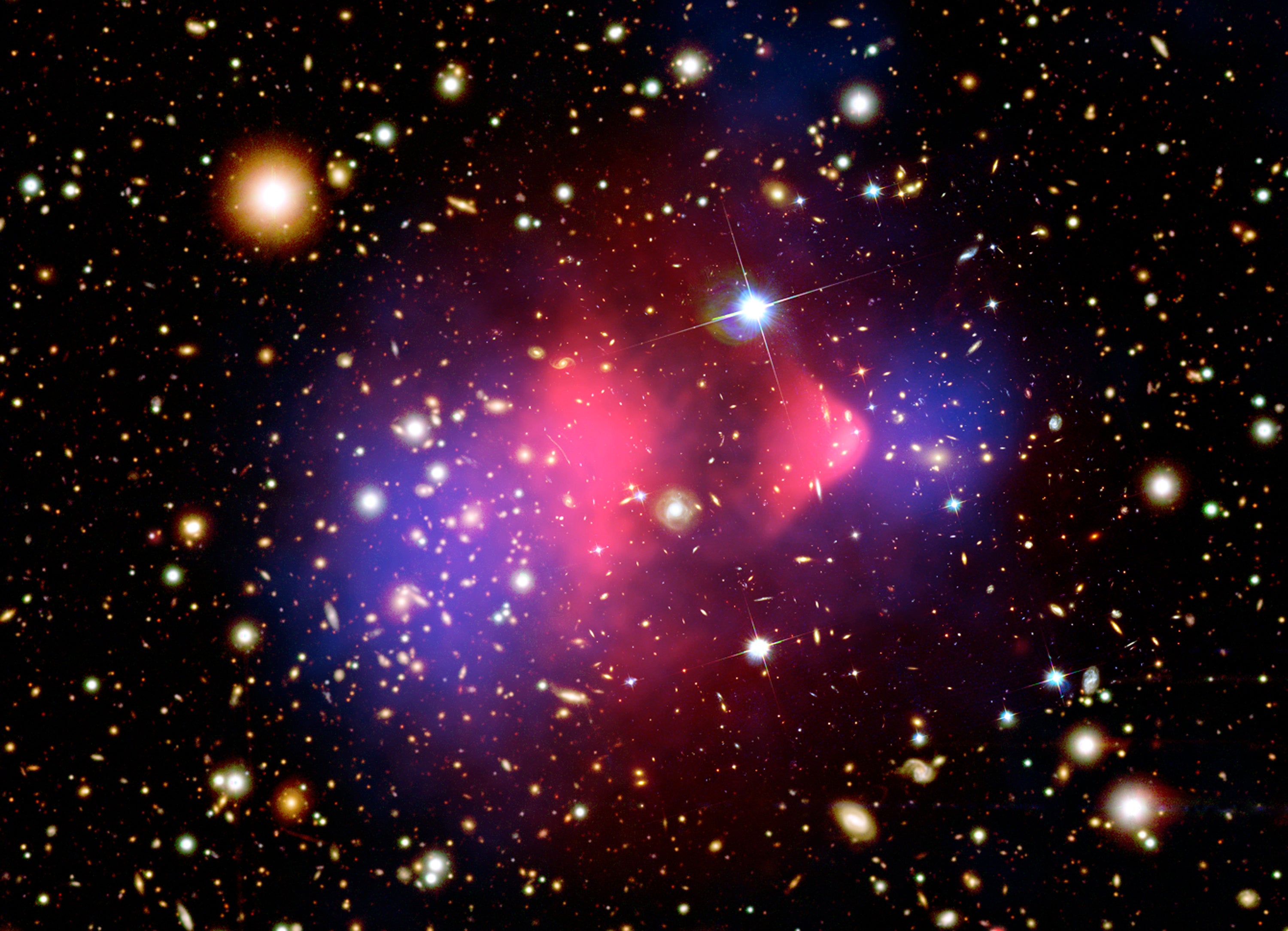
The Bullet Cluster is a massive collection of two large groups of galaxies some 3.8 billion light-years distant. The two groups appear to have collided in one of the most energetic events known in the universe since the Big Bang.
The aftermath has provided dramatic evidence for the existence of dark matter. In 2006, astronomers published data from NASA’s Chandra X-ray Observatory that show how the collision heated the existing gas to millions of degrees. They also obtained optical images with the Hubble Space Telescope as well as the Very Large Telescope and Magellan Telescope in Chile. By studying the combined cluster’s gravitational lensing effects — the bending and magnifying of light from objects behind it — astronomers were able to map out the Bullet Cluster’s mass. An overlay of this map onto the combined X-ray and optical images revealed that its mass does not line up with the observed matter, implying that the observed gravitational lensing must be created by invisible, or dark, matter, which is not subject to the same drag forces as the gas.
Why are these groups called the Bullet Custer? Because a sub-cluster, the “bullet,” has collided with the main cluster, approximately in the plane of the sky, producing a strong bow shock in the intracluster gas during the collision. In images, it appears like a snapshot of a bullet piercing an apple. You’ll find the cluster (or not, because it is extremely dim) in Carina the Keel, about 6° east-southeast of the brilliant star Canopus. Like dark matter, the cluster’s brightest members are likely to be virtually invisible to most visual observers, as they shine around magnitude 20 and fainter.









